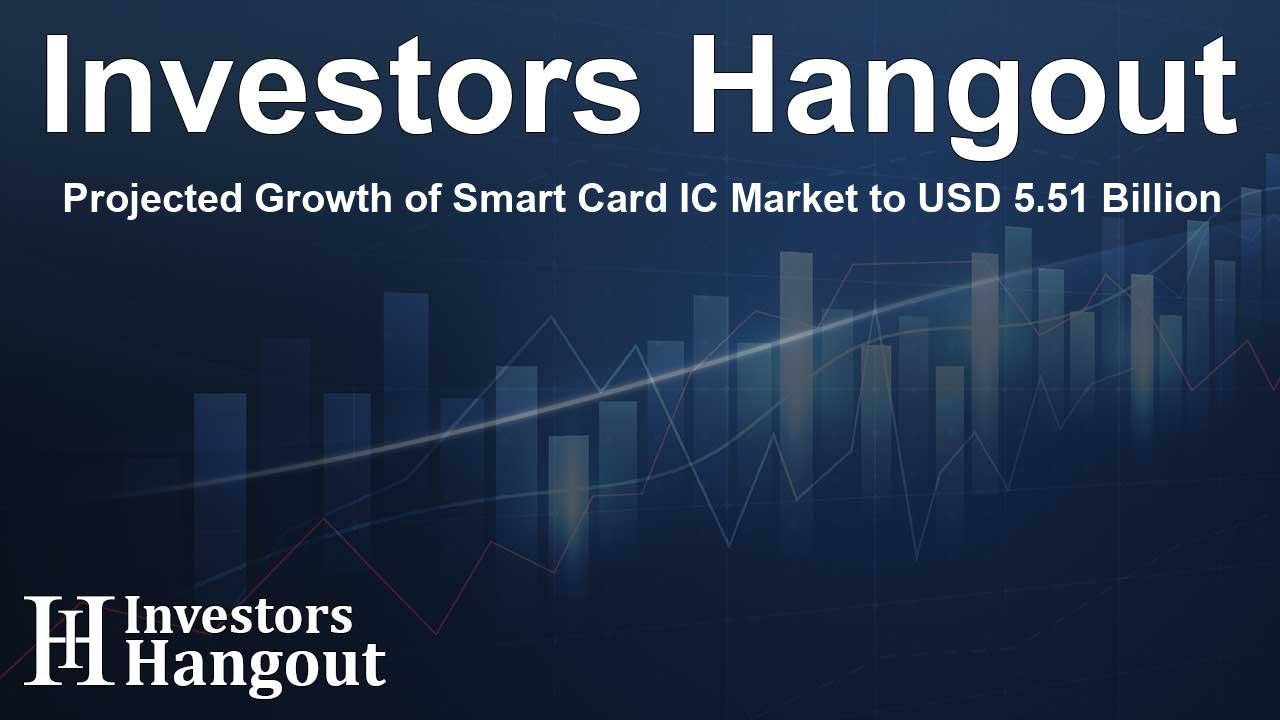Projected Growth of Smart Card IC Market to USD 5.51 Billion

Smart Card IC Market Size & Insights
As technology continues to evolve, the Smart Card Integrated Circuit (IC) market is positioned for substantial growth. Originally valued at USD 3.86 Billion, projections indicate a leap to USD 5.51 Billion, showcasing a compound annual growth rate (CAGR) of 4.56% during the forecast period. This growth highlights a transition toward more secure and efficient payment solutions across a diverse range of sectors.
Increasing Demand for Secure Payment Solutions
The global landscape is witnessing an impressive shift towards secure, contactless payment methods, which is proving to be a significant driver for the Smart Card IC market. Factors contributing to this shift include government initiatives focused on healthcare and national identification, along with expanding transit systems. Advanced technologies, such as near-field communication (NFC) and biometric-enabled circuits, enhance security and broaden the functionality of smart card applications.
Urbanization and Digitalization Contributions
Rapid urbanization paired with rising digitalization rates creates a fertile environment for the Smart Card IC market. Enhanced consumer awareness about security and convenience is further spurring adoption rates. As demand rises worldwide, leading manufacturers are responding by amplifying production capabilities and investing in innovative research and development efforts.
Leading Players in the Smart Card IC Market
Numerous industry players are pivotal in shaping the Smart Card IC market dynamics. Companies such as Qualcomm, Fujitsu Semiconductor, Samsung Electronics, and Infineon Technologies are at the forefront, continually developing new products that cater to evolving market demands. The competitive landscape is robust, with firms also focused on adding features that support secure payment solutions.
Key Segmentation in the Market
The Smart Card IC market is categorized based on various criteria including contact type, application, interface type, and chip technology. Notably, contact smart card ICs currently dominate the market with a significant share, while contactless ICs are rapidly gaining traction, driven by the increasing desire for touch-free transaction options. Furthermore, applications range widely, with payment solutions taking the lead in usage globally.
Geographical Insights on Market Penetration
In 2025, North America commanded a major market share due to the widespread adoption of smart card IC solutions across sectors such as banking, healthcare, and government. Meanwhile, the Asia Pacific region is set to experience the fastest growth, propelled by digital transformation initiatives and government programs focusing on secure transactions.
Recent Developments in Smart Card Technology
Recent advancements underscore the ongoing innovation in the Smart Card IC market. For instance, Qualcomm is enhancing its product lineup by integrating sophisticated security features aimed at fortifying contactless payments. Similarly, Fujitsu Semiconductor's introduction of new smart card ICs tailored for digital identity applications reflects the industry's commitment to addressing modern security challenges.
Exclusive Insights from the Smart Card IC Market Report
The market report dives deep into various aspects, including technology adoption rates, user application insights, interface metrics, and security trends. It emphasizes understanding how different chip technologies like 8-bit, 16-bit, and 32-bit ICs are evolving to meet specific application demands. Moreover, the report sheds light on market penetration metrics that can guide investment and competitive strategies moving forward.
Conclusion
As we look toward the future of the Smart Card IC market, it’s clear that a blend of innovation, consumer demand for security, and strategic developments by top players will be pivotal. The anticipated growth to USD 5.51 Billion signifies not just numbers but a substantial shift in how we approach secure transactions and technology's role in our everyday lives.
Frequently Asked Questions
What is the projected growth rate of the Smart Card IC market?
The Smart Card IC market is expected to grow at a CAGR of 4.56% from 2026 to 2033.
What are the primary drivers of growth in this market?
Key drivers include the increasing demand for secure payment solutions, urbanization, and digitalization trends.
Which regions are leading the Smart Card IC market?
North America holds the largest market share, while the Asia Pacific region is expected to witness the fastest growth.
Who are the major players in the Smart Card IC market?
Leading players include Qualcomm, Fujitsu Semiconductor, Samsung, and Infineon Technologies among others.
What applications dominate the Smart Card IC market?
Payment applications are the most dominant, followed by identification, healthcare, and transit uses.
About The Author
Contact Olivia Taylor privately here. Or send an email with ATTN: Olivia Taylor as the subject to contact@investorshangout.com.
About Investors Hangout
Investors Hangout is a leading online stock forum for financial discussion and learning, offering a wide range of free tools and resources. It draws in traders of all levels, who exchange market knowledge, investigate trading tactics, and keep an eye on industry developments in real time. Featuring financial articles, stock message boards, quotes, charts, company profiles, and live news updates. Through cooperative learning and a wealth of informational resources, it helps users from novices creating their first portfolios to experts honing their techniques. Join Investors Hangout today: https://investorshangout.com/
The content of this article is based on factual, publicly available information and does not represent legal, financial, or investment advice. Investors Hangout does not offer financial advice, and the author is not a licensed financial advisor. Consult a qualified advisor before making any financial or investment decisions based on this article. This article should not be considered advice to purchase, sell, or hold any securities or other investments. If any of the material provided here is inaccurate, please contact us for corrections.
